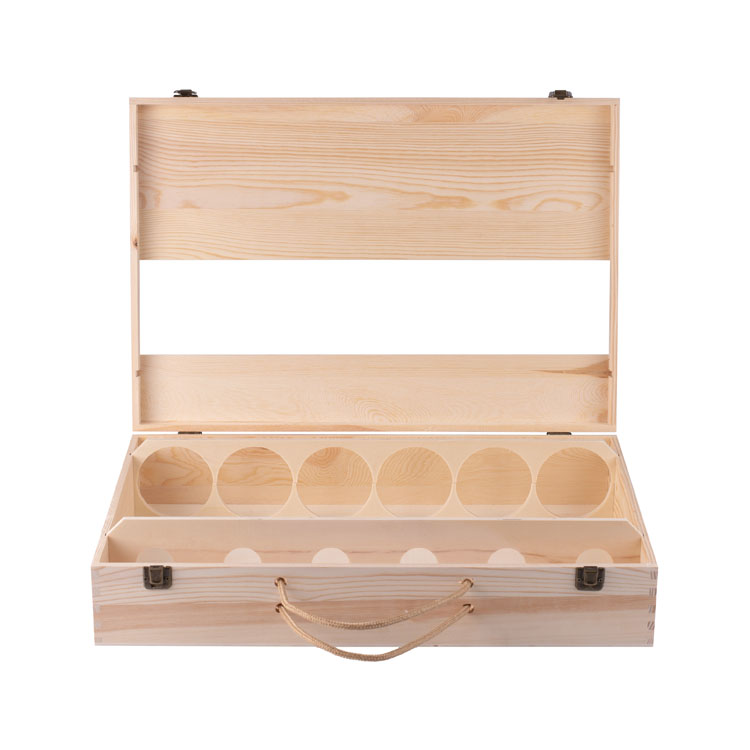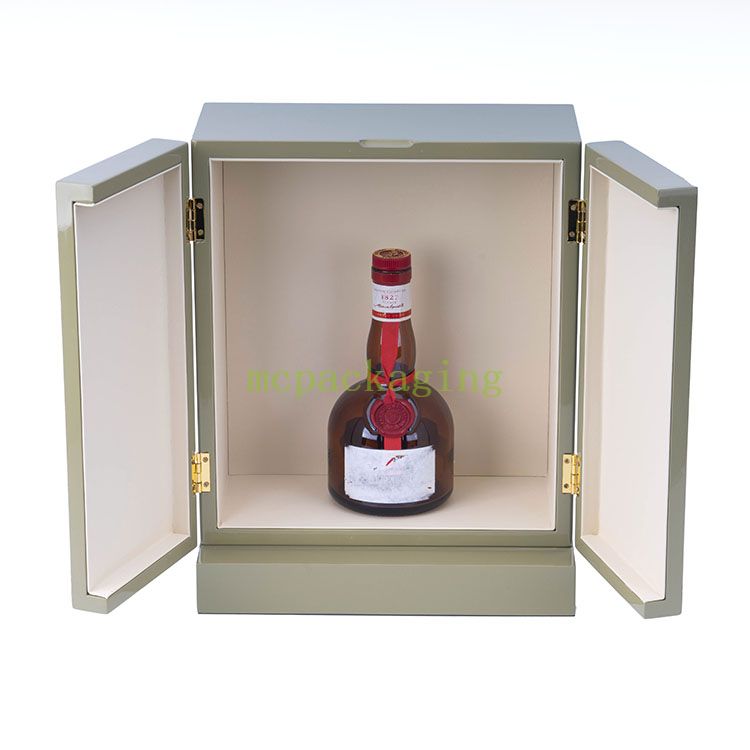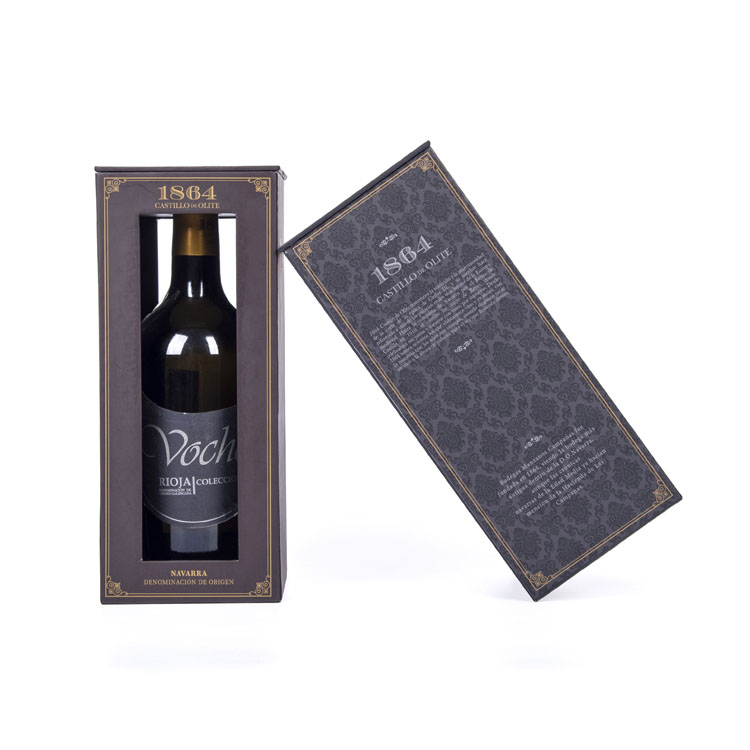- All
- Product Name
- Product Keyword
- Product Model
- Product Summary
- Product Description
- Multi Field Search
Author: Site Editor Publish Time: 2025-04-27 Origin: Site

Did you know that wine packaging can impact the planet? Traditional wine bottles create a significant carbon footprint. But there’s a more sustainable way to package wine.
In this article, we’ll discuss what makes a wine packaging box eco-friendly. You’ll learn about the materials, designs, and benefits that reduce environmental impact. Let’s dive into how eco-friendly wine packaging boxes can help save the planet.
Packaging plays a crucial role in how products are perceived by consumers. In the wine industry, the focus has traditionally been on glass bottles, which, while iconic, come with significant environmental drawbacks. The energy required for glass production, combined with transportation costs due to the weight of glass bottles, creates a high carbon footprint.
As consumers become more environmentally conscious, wine producers are looking for ways to reduce this footprint. Eco-friendly wine packaging boxes made from recycled materials, biodegradable components, and lightweight designs are emerging as the solution. These packaging options not only help reduce waste but also promote sustainability, aligning with consumer values and reducing environmental impact.
Eco-friendly wine packaging boxes stand out because of the materials used, their recyclability, and their overall design. Let’s break down what makes a wine packaging box eco-friendly.

One of the most effective ways to make wine packaging boxes eco-friendly is by using recycled materials. Recycled paper, cardboard, and plastic significantly reduce the reliance on virgin resources and lower the environmental impact of manufacturing.
Cardboard and Paper: Most wine packaging boxes are made from recyclable paper or cardboard. These materials are biodegradable and can be recycled multiple times, reducing the amount of waste that ends up in landfills.
Plastic: Some wine packaging boxes also use recycled plastic, like PET, which is durable and lightweight. This material is easier to recycle compared to virgin plastics and has a lower environmental impact.
By using recycled materials, manufacturers minimize waste and help create a circular economy where materials are reused rather than disposed of.
Some eco-friendly wine packaging options go even further by using biodegradable and compostable materials. Materials like cellulose, seaweed-based packaging, and other plant-based fibers offer a natural decomposition process, reducing landfill waste.
Cellulose and Seaweed Packaging: These biodegradable materials break down naturally over time, turning into nutrient-rich soil. This makes them a perfect alternative to non-compostable packaging materials like foam and plastic.
These materials are particularly beneficial in reducing waste from the wine industry, which is a significant contributor to plastic pollution. They also provide a more sustainable option for producers and consumers who want to minimize their environmental footprint.
The weight of packaging significantly influences the energy required for transportation. Wine packaging boxes that are designed to be lighter help reduce the carbon emissions associated with transporting wine. Lighter materials like thin cardboard or innovative packaging designs allow for more efficient shipping, requiring less fuel.
Energy Efficiency: The lighter the packaging, the less fuel is needed during transportation. By reducing the weight of packaging, wine producers can significantly decrease their carbon footprint.
Lightweight packaging also benefits consumers by reducing shipping costs, making eco-friendly options more appealing to both businesses and customers.
Wine packaging boxes designed for easy recycling can significantly improve sustainability. Packaging systems that are easy to separate and recycle maximize the recycling rate and contribute to a more sustainable lifecycle.
Recyclability: Boxes made from single materials or those designed for easy separation allow for higher recycling efficiency. For example, boxes with removable inserts or bag-in-box packaging systems reduce waste and encourage recycling.
Reusability: Some wine packaging boxes are designed to be reused. Reusable boxes or shipping containers offer an eco-friendly option as they can be repurposed for other uses, reducing the need for new packaging altogether.
The more recyclable or reusable a packaging option is, the less waste is generated, contributing to a more sustainable product lifecycle.
The environmental impact of wine packaging goes beyond the materials used. The production, transportation, and disposal of packaging all contribute to a product’s carbon footprint. By switching to eco-friendly wine packaging boxes, wine producers can minimize their environmental impact in several ways.

Wine packaging boxes, especially those made from lighter materials and using less energy in production, help lower the overall carbon footprint. Packaging alternatives like bag-in-box and Tetra Pak require less energy to produce and transport compared to traditional glass bottles.
Sustainable Alternatives: These packaging options reduce the need for glass bottles, which are energy-intensive to produce. The adoption of lighter, more energy-efficient packaging directly correlates with fewer carbon emissions.
By using alternative packaging solutions, wine producers can make a significant contribution to reducing the carbon emissions associated with wine production and transportation.
Using less material overall and promoting recyclability helps reduce the total waste produced by the wine industry. Traditional packaging methods, such as using plastic or foam for bottle protection, contribute significantly to waste generation. In contrast, eco-friendly packaging materials reduce waste by being either recyclable, biodegradable, or reusable.
Waste Reduction: Choosing materials that require fewer resources or are designed for easy disposal reduces the amount of packaging waste. For example, using wine boxes made from recycled materials reduces the need for new resources, while compostable materials ensure that packaging waste decomposes naturally.
By reducing waste at every stage—from production to transportation—eco-friendly wine packaging boxes provide a more sustainable solution.
Wine production is a water-intensive process, and traditional packaging methods contribute to water usage as well. Eco-friendly packaging alternatives, such as recycled materials and lightweight designs, often use less water in their production processes compared to glass bottles.
Water Conservation: Many sustainable packaging options use less water during production. For example, recycled paper requires less water to process than creating new paper, and lightweight materials reduce the need for extensive manufacturing processes.
By reducing water consumption, eco-friendly wine packaging boxes play a role in conserving precious water resources.

As environmental awareness continues to grow, consumers are becoming increasingly conscious of the packaging choices of the products they purchase. Wine drinkers are no exception. A significant portion of consumers now considers the sustainability of packaging when making purchasing decisions.
Consumer Preferences: Studies show that 75% of consumers are influenced by packaging design, and many will choose sustainable alternatives when given the option. Eco-friendly wine packaging boxes meet this demand by providing an attractive, practical, and environmentally responsible packaging solution.
Consumers want packaging that aligns with their values, and choosing eco-friendly wine packaging not only reduces environmental impact but also appeals to the growing demand for sustainable products.
Eco-friendly wine packaging boxes are essential for reducing waste, saving energy, and protecting the environment. We provide sustainable packaging solutions that align with your brand’s values. Our eco-friendly options offer durability and style without harming the planet. Visit us today to explore how our packaging can make your wine business greener.
Q: Why is eco-friendly wine packaging important?
A: Eco-friendly packaging reduces waste, minimizes carbon emissions, and aligns with growing consumer demand for sustainable products.
Q: What materials are used in eco-friendly wine packaging boxes?
A: Common materials include recycled cardboard, biodegradable plastics, and compostable packaging made from natural fibers.
Q: How do eco-friendly wine boxes reduce carbon emissions?
A: By using lightweight materials and sustainable production methods, eco-friendly boxes require less energy during manufacturing and transportation.
Q: Can eco-friendly wine packaging be recycled?
A: Yes, many eco-friendly wine packaging boxes are made from recyclable materials such as cardboard and biodegradable plastics.
Q: What are the benefits of using wine packaging boxes over glass bottles?
A: Wine packaging boxes are lighter, use less material, and have a lower environmental impact, reducing transportation emissions and waste.
